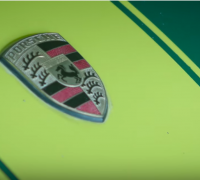If you’re interested in restoring a vintage Porsche 911 or 912, this is a great starting point.
In this step-by-step video, we’ll show you how to restore your front suspension pan.
First off, you’ll have to remove all of the rusted metal. For our own restoration, this took about 8 hours.
Depending on where your Porsche is cut, you can trim our front suspension pan piece to fit your specifications. It’s also a good idea to spray it with weld-through primer.
Once you’ve done this, you can begin securing it with self-tapping screws to the body of your vintage Porsche.
If you think you’ve got it in the right place, you can test it out by lining it up with your suspension. From there you can adjust it to fit if you need to.
Check out our video for more details about this step in the restoration process!



